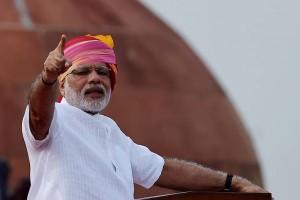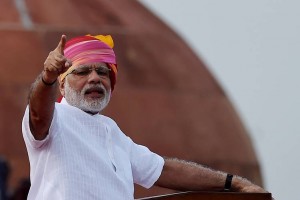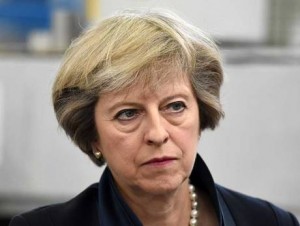- India’s prime minister bolsters ties with Vietnam to counterbalance China’s growing aggression
Wall Street Journal
HARSH V. PANT
 In a move of great symbolic significance, India’s Prime Minister Narendra Modi will make a stop in Vietnam on Saturday on his way to the G-20 summit in Hangzhou, China. This will be the first visit to Vietnam by an Indian leader in 15 years, ostensibly to celebrate the 10th anniversary of the two nations’ strategic partnership. But at this tense moment in China-India relations, Mr. Modi’s visit will also remind Beijing that New Delhi is no longer hesitant to expand its presence in China’s periphery.
In a move of great symbolic significance, India’s Prime Minister Narendra Modi will make a stop in Vietnam on Saturday on his way to the G-20 summit in Hangzhou, China. This will be the first visit to Vietnam by an Indian leader in 15 years, ostensibly to celebrate the 10th anniversary of the two nations’ strategic partnership. But at this tense moment in China-India relations, Mr. Modi’s visit will also remind Beijing that New Delhi is no longer hesitant to expand its presence in China’s periphery.
India under the Modi government has made no secret of its desire to play a more assertive role in the larger Indo-Pacific. As Mr. Modi himself underlined to the joint session of the U.S. Congress in June, “A strong India-U.S. partnership can anchor peace, prosperity and stability from Asia to Africa and from Indian Ocean to the Pacific. It can also help ensure security of the sea lanes of commerce and freedom of navigation on seas.”
A more ambitious outreach to Vietnam therefore shouldn’t be surprising. A large part of New Delhi’s abiding interest in the region concerns defense. It wants to build relations with countries such as Vietnam, which can act as a pressure point against China. This comes at a time when the U.S. has also lifted its longstanding ban on the sale of lethal military equipment to Vietnam. With this in mind, New Delhi has been helping Hanoi bolster its naval and air capabilities.
It has signaled it is finally ready to sell Hanoi its supersonic BrahMos missile, a deal Vietnam has been pursuing since 2011. A few years ago, this would have been considered a step too far in antagonizing China. But now the Modi government has directed BrahMos Aerospace, which produces the missiles as part of an Indo-Russian joint venture, to expedite this sale, and will even provide a $100 million line of credit for defense equipment. India has also sold four offshore patrol vessels to Vietnam, which will strengthen the nation’s defences in the energy-rich South China Sea.
India is also helping Vietnam build capacity for repair and maintenance of its defense platforms. At the same time, the armed forces of the two states have started cooperation in areas such as information technology and the English-language training of Vietnamese army personnel. These efforts will help the two nations ensure sea-lane security, addressing their shared concerns about China’s access to the Indian Ocean and the South China Sea.
As India and Vietnam ponder how to manage China’s rise, they have been drawn closer to each other, but also to America. New Delhi has a burgeoning relationship with Washington, bolstered by a logistical-support agreement signed this week. Meanwhile, Vietnam has been courting America as the South China Sea becomes a flashpoint.
It is instructive that India is entering the fraught region of the South China Sea through Vietnam. New Delhi signed an agreement with Hanoi in October 2011 to expand and promote oil exploration within Vietnam’s territorial waters, then confirmed its decision to carry on despite China’s challenge to the legality of India’s presence. Beijing insisted that any such expeditions required its permission, but Vietnam quickly asserted its sovereign rights, citing the 1982 United Nations Convention on the Law of the Sea.
Hanoi has been publicly sparring with Beijing over the South China Sea for the past several years, so such a response was expected. What was new, however, was New Delhi’s aggression in taking on China. By accepting Vietnam’s invitation to explore for oil and gas, India not only demonstrated its desire to deepen its friendship with Vietnam, but ignored China’s warning to stay away. This has helped strengthen India’s relationship with Vietnam.
For India, Vietnam is the linchpin of a move east and a counterbalance in the region, much in the same way that Pakistan is for China a counterweight to India in South Asia. If Beijing wants to expand westward, New Delhi’s thinking goes, India can do the same in the opposite direction. And if China can have a strategic partnership with Pakistan that ignores India’s concerns, India can develop robust ties with states like Vietnam without giving China a veto on such relationships.
New Delhi is ready to challenge Beijing on its own turf, and Mr. Modi’s visit to Vietnam underscores this evolution in India’s Indo-Pacific policy. It’s a stance that’s being welcomed by states that fear China’s growing aggression and could lead to a more stable balance of power in the region.




